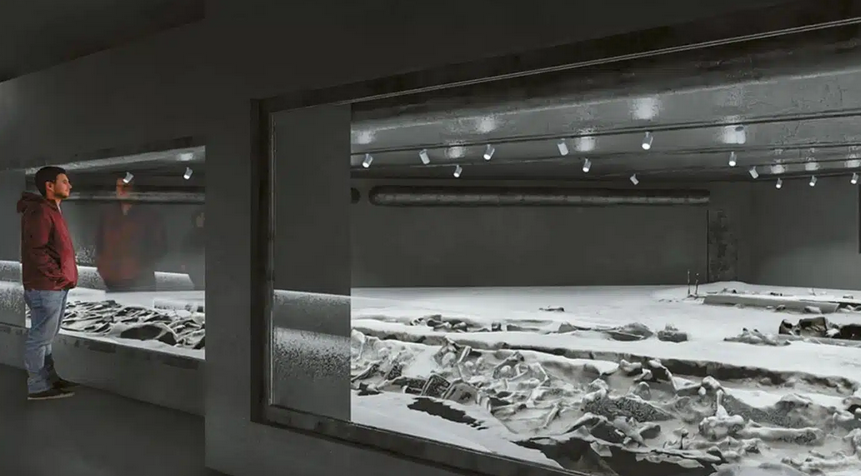Sapienza: Messenia’s infamous island features impressive shipwrecks and the deepest point in the Mediterranean
Although uninhabited, it is located on a naval route that has been of great importance since ancient times
The islets that lie south and west of the coast of Messenia do not look great at first glance – and thus escape mass attention. But they hold their own surprises, with Sapienza being the most typical example among them.
Sapienza belongs to the so-called Messinian Oenousses and is located off the south western coast of Messenia, just opposite Methoni. The waters of the area are regarded as part of the Ionian Sea. The island covers an area of 9 square kilometres and, contrary to what most people might think, it is not uninhabited: until 1986, lighthouse keepers lived there, while the 2011 census recorded 2 permanent residents. It is estimated, however, that no one lives there anymore.
The name Sapienza is of Italian origin and means “wisdom”. This takes us back to 1209, when it came under Venetian rule, who we know used the island as an anchorage for their fleet. In later years it became part of Greece, after the successful outcome of the 1821 Greek War of Independence.
The rich marine world of Sapienza
Sapienza is located on a sea route that since ancient times has been of great commercial and strategic interest, connecting Italy with the Middle East. At the same time, however, it was also a difficult area, full of strong currents, strong winds and difficult rocks. As a result, there have been several shipwrecks on the coast and off the island, some of which are considered important from an archaeological point of view.
One of the most famous of these, for example, is that of the ship that (we believe) carried the columns from the great peristyle built by Herod in Caesarea, Palestine (1st century AD). Today it is known as the “shipwreck of the columns” and has been found at a depth of 10 metres, near Cape Spitha. In fact, the Ministry of Culture plans to turn it into a marine archaeological site open to visitors.
The importance of Sapienza for maritime routes continued to be great during the 19th century, when it was decided to use the technological developments of the time to address the issue of frequent shipwrecks in its maritime area. In 1885, at the request of Queen Victoria of England, an 8-metre high lighthouse was built at the southern point of the island, which for its time was one of the most powerful in the Mediterranean: its mirrors were illuminated by asbestos lamps and its range was 25 nautical miles.
In fact, as the rotation lasted a full eight minutes, there are testimonies from women of the mainland villages who said that in times before the advent of electricity they used these bright eight-minute rotating lights to illuminate the nights. The lighthouse still operates nowadays; as it has been automated since 1986 when it was converted to solar (it is based on solar cells). At the same time, however, it has been declared a listed modern monument.
Beyond Sapienza, meanwhile, in the open waters stretching 6 nautical miles to the southwest, lies the deepest point in the entire Mediterranean: it is called “Oenousses Freshet” and is estimated to go down to 5. It is estimated to reach the bottom at 5,269 metres – with old measurements being verified in 2020, thanks to an expedition involving Prince Albert II of Monaco (who reached the bottom in a submarine). The bottom is also home to the Nestor submarine telescope, which is searching for neutrinos in an attempt to gather information about the planet’s distant past (and future). The reason for this, of course, is that these depths are thought to be free of cosmic radiation.
How to get there:
If you don’t have a boat, the only way to reach Sapienza is by boat from Methoni, which is 61 km from Kalamata, or from Finikounda, which is 62.5 km from the capital of Messenia. During summer there are several routes, but from the end of August onwards they become less frequent. The journey from Methoni takes about 20 minutes and you will disembark at the idyllic beach of Ammos, where most visitors aim for. If you find yourself there, it’s also worth visiting the forest in the interior of the island, where arbutus trees reach 10 metres high.
However, it is worth arranging separately a full tour of the Sapienza perimeter, which will give you the opportunity to experience the steep western coastline with its steep caves where wild pigeons nest. Sailing southwards, you will then encounter the famous Diadelfi islet, with its characteristic shape that from above looks like a heart. Because of this, it is one of the most photographed Greek landscapes and you will see it adorn various (domestic and international) albums of photographs of our islands.
Source: .travel.gr









